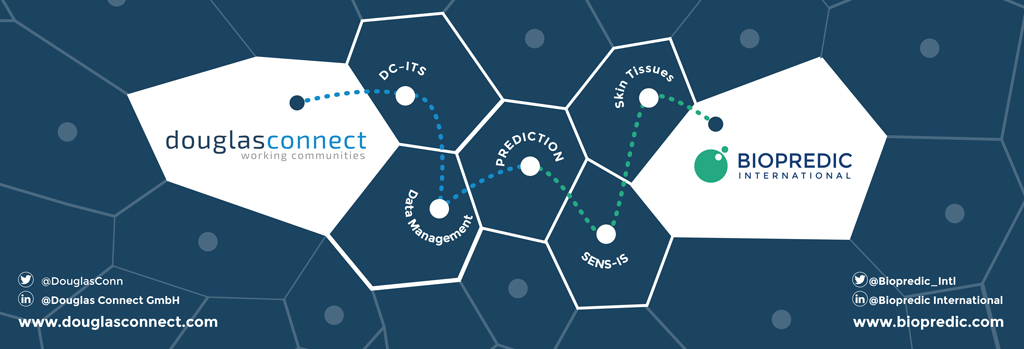A more powerful way to test skin sensitisation

Edelweiss Connect and Biopredic make joint presentation at Eurotox
You are a European cosmetic company and your lab has come up with a new chemical compound that promises softer skin. But, first, you must test the compound to determine if it can trigger sensitivity. Testing on lab animals is out - that’s been banned for cosmetics in the EU since 2013. Instead, your lab will use an Integrated Testing Strategy (ITS) to predict skin sensitivity, combining in silico computer models and what is already known about similar chemical compounds (in vitro data). If a similar compound is already known to cause sensitisation, the model will be able to predict the probability that your new compound could as well.
Integrated Testing Strategies take a number of approaches, including one developed by Dr. Joanna Jaworska, Principal Scientist, Procter & Gamble. Using Bayesian networks, Dr. Jaworska’s approach improved on earlier ones by tolerating missing information and basing probability of skin sensitisation on cumulative evidence. It could also provide a sound estimate of confidence and uncertainty in the ITS assessment. But Dr. Jaworska realized that her approach was complicated to use.
Bridging the islands of specialisation
In 2016, Dr. Jaworska was at a conference in the Swiss Alps and began telling another participant, Barry Hardy, CEO, Edelweiss Connect, about her problem. Edelweiss Connect develops software solutions supporting design and assessment so Dr. Hardy considered Dr. Jaworska’s problem from an in silico perspective. What the P&G approach was missing, he decided, was a user-friendly integrating application able to combine all available data into the ITS. Why not work together? Soon, teams from the two companies were pooling their expertise. Out of this collaboration, grew ITS SkinSens, a web-based application offering three validated tests combined within silico models and tools. In addition, the new app logged evidence so that documenting a reproducible integrated assessment was enabled and reported to safety assessment regulators who, therefore, had stronger grounds for approval.
“What I like about the Bayesian approach is that it puts weight on the evidence,” Dr. Hardy says. “With ITS SkinSens, we’re like a legal team bringing in all the evidence to a jury, so that they can reach a verdict they are confident about.”
Adding genomics data
Meanwhile, Christophe Chesne, CEO of Biopredic International, a global supplier of biological products, was thinking about improvements to ITS from his own industry perspective. “We knew that we could do a better job if we could add a layer of IT and AI on top of our data,” he says.
Chesne and Hardy had both contributed to the EU research initiative SEURAT-1, although their activities were separated into separate work packages. Edelweiss Connect had been responsible for organising the data and building predictive models; Biopredic provided cell lines so that realistic mechanistic readouts could be obtained for compounds. When they ran into each other at SOT 2017, they were soon talking about how to add genomics data to the ITS SkinSens’s in vitro tests and in silico tools. “We identified ITS SkinSens as one case among many others that we could work on together,” says Dr. Chesne.
Joint presentation at Eurotox
The first result of this collaboration is ITS SkinsSens, an integrating application that adds genomics data from the Sens-IS assay to existing in vitro assays and in silico models to create a more powerful Integrated Testing Strategy. “Sens-Is is a leading assay on the market that is genomics-based and covers many key events in skin sensitisation,” explains Dr. Chesne. By adding such genomics evidence, ITS SkinSens offers accurate, reproducible risk assessment to determine whether a substance is a skin sensitiser and even how strong the sensitisation potency may be.
For their joint launch, the two companies will share a booth 2-5 September, Booth 29/30 at Eurotox in September. “At a show like Eurotox, you usually go to one stand and talk about software. Then, you go to another and talk about running assays. It takes too long to improve integration solutions,” Dr. Hardy explains. “Together, we will be able to use the feedback in a more agile way to improve and integrate solutions. I see great potential going beyond Eurotox to innovate on solutions together until we have the best one.”


